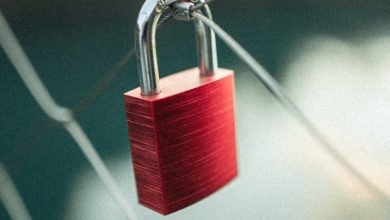How to Protect Your Crypto Assets from Malware

- How malware can target your crypto assets
- Common types of malware used to steal crypto
- Best practices for securing your crypto wallets
- Protecting your assets from phishing attacks
- The importance of regular software updates for security
- Steps to take if your crypto assets are compromised
How malware can target your crypto assets
Malware can pose a significant threat to your crypto assets by targeting vulnerabilities in your system. Cybercriminals use various tactics to infect your devices with malware, such as phishing emails, malicious websites, and fake software downloads. Once your device is infected, the malware can steal your private keys, passwords, and other sensitive information related to your crypto assets.
One way malware can target your crypto assets is through keyloggers, which record your keystrokes and can capture your login credentials for your crypto wallets and exchanges. Another common method is through ransomware, which encrypts your files and demands a ransom payment in cryptocurrency to unlock them. Additionally, cryptojacking malware can secretly use your device’s processing power to mine cryptocurrency without your knowledge.
To protect your crypto assets from malware, it is essential to take proactive measures such as using reputable antivirus software, keeping your system and software up to date, and avoiding clicking on suspicious links or downloading attachments from unknown sources. It is also recommended to use hardware wallets to store your crypto assets securely offline and enable two-factor authentication for an extra layer of security.
Common types of malware used to steal crypto
There are several common types of malware that cybercriminals use to steal cryptocurrencies from unsuspecting individuals. One type of malware is known as keyloggers, which are designed to record every keystroke a user makes on their computer. This includes sensitive information such as login credentials and private keys, which can then be used by hackers to gain access to crypto wallets.
Another type of malware is called ransomware, which encrypts a user’s files and demands payment in cryptocurrency in exchange for the decryption key. If the ransom is not paid, the files may be permanently lost. Cryptojacking is also a prevalent form of malware, where hackers use a victim’s computer processing power to mine cryptocurrencies without their knowledge.
Phishing attacks are yet another common method used by cybercriminals to steal crypto. In these attacks, scammers send fraudulent emails or messages to trick users into revealing their login credentials or private keys. By impersonating legitimate websites or services, hackers can gain access to crypto wallets and drain them of funds.
It is essential for crypto holders to be vigilant and take steps to protect their assets from these types of malware. By using strong, unique passwords, enabling two-factor authentication, and keeping software up to date, individuals can reduce their risk of falling victim to cyber attacks. Additionally, using hardware wallets or cold storage solutions can provide an extra layer of security against malware and other threats.
Best practices for securing your crypto wallets
When it comes to securing your crypto wallets, there are several best practices you can follow to protect your assets from malware. Here are some key steps you should take:
- Use a hardware wallet: One of the most secure ways to store your cryptocurrencies is by using a hardware wallet. These devices store your private keys offline, making it much harder for hackers to access your funds.
- Enable two-factor authentication: Adding an extra layer of security to your wallets by enabling two-factor authentication can help prevent unauthorized access to your accounts.
- Keep your software up to date: Make sure to regularly update your wallet software to protect against any known vulnerabilities that hackers could exploit.
- Use strong passwords: When creating passwords for your wallets, make sure to use a combination of letters, numbers, and special characters to make them harder to crack.
- Backup your wallet: Always remember to backup your wallet and store the backup in a secure location. This way, if your device is lost or stolen, you can still access your funds.
By following these best practices, you can help ensure that your crypto assets are safe from malware and other security threats.
Protecting your assets from phishing attacks
Phishing attacks are a common threat to crypto assets, where scammers attempt to deceive individuals into revealing sensitive information such as passwords or private keys. To protect your assets from phishing attacks, it is important to be vigilant and follow best practices.
- Be cautious of unsolicited emails or messages asking for personal information.
- Verify the sender’s identity before clicking on any links or providing any information.
- Use two-factor authentication whenever possible to add an extra layer of security to your accounts.
- Keep your software and security systems up to date to protect against known vulnerabilities.
- Educate yourself and your team on how to identify phishing attempts and what to do if you suspect you have been targeted.
By taking these proactive measures, you can greatly reduce the risk of falling victim to phishing attacks and safeguard your crypto assets from malicious actors. Remember, it is always better to be safe than sorry when it comes to protecting your investments.
The importance of regular software updates for security
Regular software updates are crucial for maintaining the security of your crypto assets. These updates often include patches for known vulnerabilities that can be exploited by malware. By keeping your software up to date, you can protect your assets from potential attacks that could compromise your funds.
When software updates are released, they typically address security issues that have been identified by developers or cybersecurity experts. These updates are designed to fix bugs or weaknesses in the code that could be exploited by malicious actors. By installing updates promptly, you can ensure that your software is equipped with the latest defenses against malware attacks.
Failure to update your software regularly can leave your crypto assets vulnerable to a variety of security threats. Hackers are constantly looking for new ways to exploit vulnerabilities in software, and outdated programs are easy targets for these attacks. To safeguard your assets, it is essential to stay diligent about installing updates as soon as they become available.
In addition to protecting your assets from malware, regular software updates can also improve the overall performance of your crypto wallet or exchange platform. Updates often include enhancements to features, bug fixes, and other optimizations that can enhance the user experience. By staying current with software updates, you can ensure that your platform is running smoothly and securely.
In conclusion, prioritizing regular software updates is essential for safeguarding your crypto assets from malware and other security threats. By staying proactive about installing updates, you can minimize the risk of potential attacks and ensure that your assets remain secure. Remember to always keep your software up to date to protect your investments in the ever-evolving landscape of cryptocurrency security.
Steps to take if your crypto assets are compromised
If your crypto assets have been compromised due to malware, it is crucial to act quickly to minimize any potential damage. Follow these steps to take immediate action and protect your investments:
1. **Disconnect from the Internet**: As soon as you suspect that your crypto assets have been compromised, disconnect your device from the internet to prevent further unauthorized access to your accounts.
2. **Change your passwords**: Change the passwords of all your crypto exchange accounts and wallets immediately. Use strong, unique passwords that are not easily guessable.
3. **Contact your crypto exchange**: Reach out to your crypto exchange or wallet provider to report the security breach. They may be able to provide you with further guidance on how to secure your accounts.
4. **Disable two-factor authentication**: If you had two-factor authentication enabled on your accounts, consider disabling it temporarily until you can secure your devices and accounts.
5. **Check your transaction history**: Review your transaction history to identify any unauthorized transactions. If you notice any suspicious activity, report it to your exchange or wallet provider immediately.
6. **Update your antivirus software**: Run a full system scan on all your devices to detect and remove any malware that may have caused the security breach. Keep your antivirus software up to date to prevent future attacks.
7. **Secure your devices**: Take steps to secure your devices, such as installing security updates, using firewalls, and avoiding clicking on suspicious links or downloading unknown files.
By following these steps promptly, you can mitigate the impact of a security breach on your crypto assets and prevent future attacks. Remember to stay vigilant and proactive in protecting your investments from malware threats.



